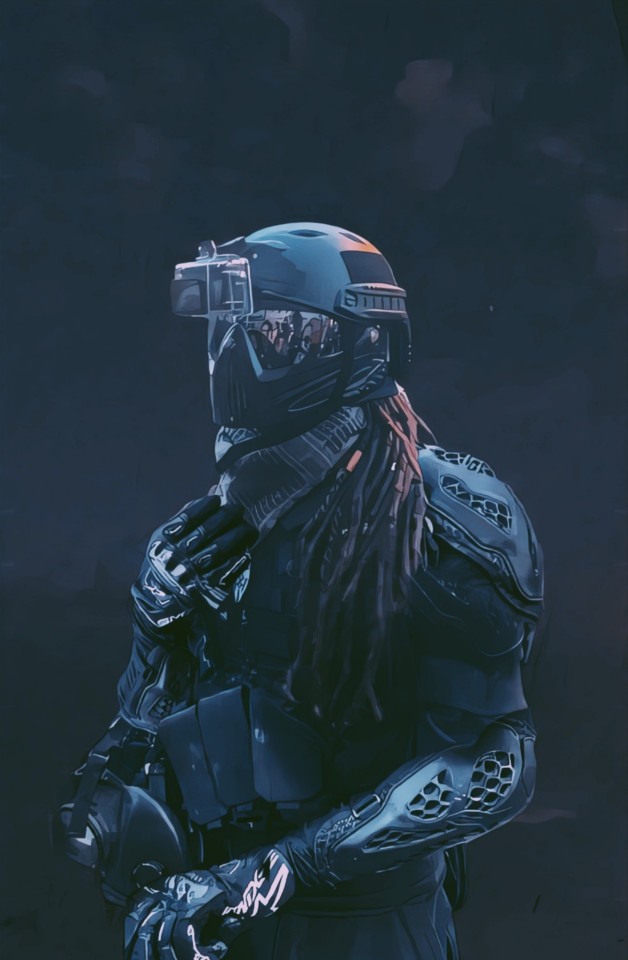

BRAZZIELL, AMERICAN-STATESMAN JASPER COLT, USA TODAY Robbie Tesfa of Minneapolis holds up a sponge round that was fired at protesters by police.

People help a protester after he was shot with a rubber bullet May 30 under Interstate 35 freeway in Austin, Texas. Fifteen percent of the 1,984 people studied were permanently injured. A study published in 2017 in the medical journal BMJ Open found that 3% of people hit by projectiles worldwide died. 'Less lethal' can still maim and kill: A visual guide to weapons police use on protesters Some are fired by special launchers with muzzles the diameter of a cardboard toilet-paper roll others can be fired from shotguns. They come in many forms, including cylindrical wooden blocks, bullet-shaped plastic missiles tipped with stiff sponge or foam, fabric sacks filled with metal birdshot, and pepper-spray balls, which are about the size of a paintball and contain the active chemical in pepper spray. They are designed to travel more slowly than bullets, with blunt tips meant to cause pain but not intended to penetrate the body. The projectiles, intended to incapacitate violent aggressors without killing them, have evolved from the rubber bullets developed in the 1970s by the British military to quell uprisings in Northern Ireland.

Police have said they fired the weapons to protect themselves and property in chaotic, dangerous scenes. Witnesses say law enforcement in several major cities used less-lethal projectiles against nonviolent protesters, shot into crowds, aimed at faces and fired at close range – each of which can run counter to policies. Although many large metropolitan police departments own these projectiles, they had never before been used on a national scale, Mesloh said. Leslie Furcron, 59, was placed in a medically induced coma after she was shot between the eyes with a “bean bag” round in La Mesa, California.įloyd’s death sparked the nation’s most widespread street protests in decades, drawing a massive response from police dressed in riot gear. Brandon Saenz, 26, lost an eye and several teeth after being hit with a “sponge round” in Dallas. Photographer Linda Tirado, 37, lost an eye after being hit by a foam projectile in Minneapolis. Photos and videos posted on social media show protesters with large bruises or deep gashes on the throat, hands, arms, legs, chest, rib cage and stomach, all caused by what law enforcement calls “kinetic impact projectiles” and bystanders call “rubber bullets.”Īt least 20 people have suffered severe eye injuries, including seven people who lost an eye, according to the American Academy of Ophthalmology. In a joint investigation into law enforcement actions at protests across the country after George Floyd’s death in police custody, Kaiser Health News and USA TODAY found that some officers appear to have violated their department’s own rules when they fired " less lethal" projectiles at protesters who were for the most part peacefully assembled.Ĭritics have assailed those tactics as civil rights and First Amendment violations, and four federal judges have ordered temporary restrictions on their use.Īt least 60 protesters sustained serious head injuries, including a broken jaw, traumatic brain injuries and blindness, based on news reports, interviews with victims and witnesses and a list compiled by Scott Reynhout, a Los Angeles researcher. Three weeks later, Matthew is struggling with her vision, and her doctor says she may never completely heal. I kept telling myself, ‘Don’t stop breathing.’” I was wearing a mask, and the whole mask was filling up with blood. “I couldn’t really grasp how bad my injury was,” said Matthews, who had a broken nose, fractured facial bones and multiple lacerations on her face. Matthews, a soft-spoken art major who lives with her mother, had gone to the demonstration against police brutality carrying bandages, water bottles and milk so she could provide first aid to protesters. “I thought my head was blown off,” said Matthews, 22, who was hit in the eye with a sponge-tipped projectile fired by law enforcement at a protest in Denver May 29.


 0 kommentar(er)
0 kommentar(er)
